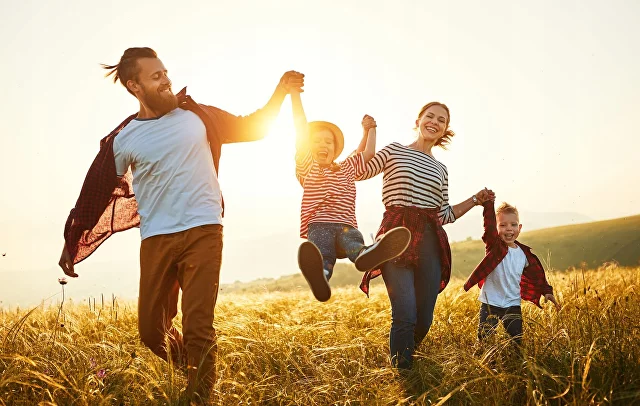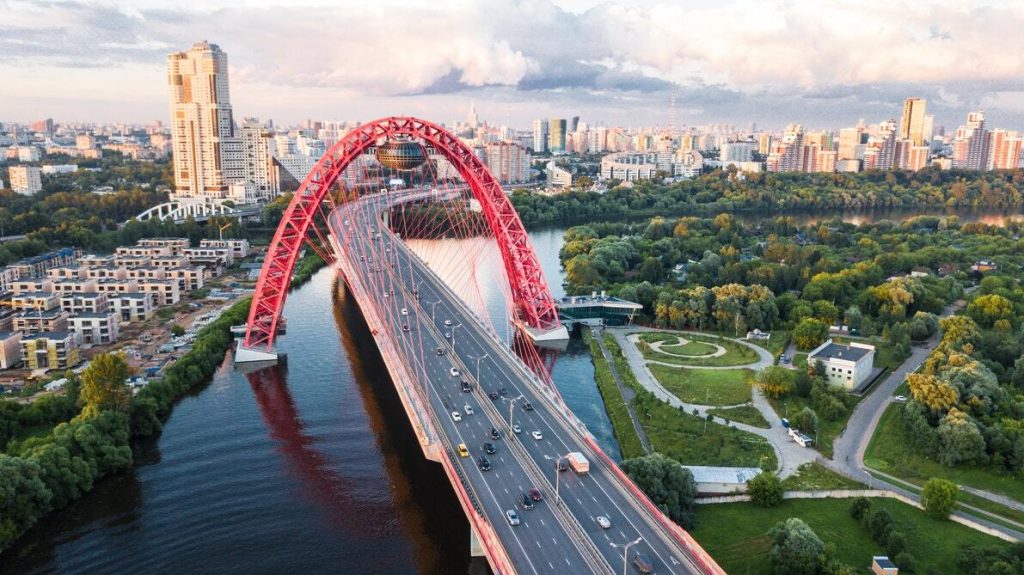For people considering a move to Russia — it’s important to understand where Russia is going
Below is the review of the first decree by the Russian president after inauguration — released the same day. Decree specifies the national development goals for Russian Federation until 2030 and with perspective for 2036.
There are seven focus areas:

Some important highlights that one can pick up from reading the 10-page document are:
In short, its an industrial plan to diversify and insulate Russian economy from sanctions while focusing on growth of population and the income and well being of the middle class.
For detailed and full translation for each goal — read below.
National goal «Preservation of the population, strengthening health and enhancing the well-being of people, support for the family»
a) Increase the total fertility rate to 1.6 by 2030 and to 1.8 by 2036, including annual growth in the total fertility rate of third and subsequent children.
b) Increase the expected life span to 78 years by 2030 and to 81 years by 2036, including the advanced growth of indicators for the expected duration of healthy life.
c) Ensure that the total fertility rate in the subjects of the Russian Federation, which in 2023 had a rate below the average for Russia, is not lower than the average Russian rates of increase by 2030.
d) Reduce the differentiation in expected life span indicators by at least 25 percent compared to the 2023 level by 2036.
e) Reduce the total duration of temporary disability of citizens of working age by 2030 based on the formation of a healthy lifestyle, creating conditions for timely disease prevention, and attracting citizens to systematic sports activities.
g) Increase the number of elderly and disabled citizens receiving long-term care services to at least 500,000 people, who are most in need of such services, by 2030.
h) Increase by 2030 the level of satisfaction among participants of the special military operation with conditions for medical rehabilitation, retraining, and employment.
i) Create and launch by 2030 a digital platform that promotes the formation, maintenance, and preservation of human health throughout their life, based on a data-driven management principle.
j) Reduce the poverty level below 7 percent by 2030 and below 5 percent by 2036, including reducing the poverty level of large families to 12 percent by 2030 and to 8 percent by 2036.

k) Reduce the Gini coefficient (income concentration index) to 0.37 by 2030 and to 0.33 by 2036.
l) Ensure the accelerated increase of the minimum wage, including its growth by more than twice compared to the amount set in 2023, achieving a minimum of 35,000 rubles per month by 2030.
m) Approve new wage systems for employees of state and municipal organizations in 2026 and implement such systems from 2027 to ensure income growth for employees in the budget sector of the economy, as provided by the Presidential Decrees of May 7, 2012 No. 597 «On measures to implement state social policy» June 1, 2012 No. 761 «On the National Action Strategy for Children for 2012−2017,» and December 28, 2012 No. 1688 «On certain measures to implement state policy in the sphere of protection of orphaned children and children left without parental care».
Realizing the potential of each individual, developing their talents, and nurturing a patriotic and socially responsible personality
a) Establishing by 2030 conditions for nurturing a harmoniously developed, patriotic, and socially responsible personality based on traditional Russian spiritual, moral, and cultural-historical values.
b) Increasing by 2030 the number of foreign students enrolled in higher education programs at Russian higher education and scientific institutions to at least 500,000.
c) Increasing by 2030 the proportion of young people involved in projects and programs aimed at professional and personal development and patriotic education to at least 75%.
d) Increasing by 2030 the proportion of young people who believe in the possibilities for self-realization in Russia to at least 85%.
e) Increasing by 2030 the proportion of young people engaged in volunteer and public activities to at least 45%.
f) Ensuring by 2030 the operation of an effective system for identifying, supporting, and developing the abilities and talents of children and youth, based on the principles of responsibility, fairness, universality, and aimed at self-determination and professional orientation of 100% of students.

g) Ensuring the promotion and protection of traditional Russian spiritual and moral values in at least 70% of projects in the fields of culture, arts, and folk creativity funded by state development institutions by 2030, and at least 80% of such projects by 2036.
h) Increasing by 2030 the satisfaction of citizens with the work of state and municipal organizations of culture, arts, and folk creativity.
i) Establishing by 2030 a modern system of professional development for teaching staff at all levels of education, which involves annual additional professional education based on updated professional standards for at least 10% of teaching staff, using leading higher education and scientific institutions.
Comfortable and Safe Living Environment
a) Improve the quality of living conditions in key populated areas by 30% by 2030 and by 60% by 2036.
b) Provide citizens with housing of at least 33 m2 per person by 2030 and at least 38 m2 by 2036.
c) Renew the housing stock by at least 20% compared to 2019 levels by 2030.
d) Sustainably reduce the proportion of housing that is unfit for living.
e) Increase the availability of housing on the primary market.
f) Develop at least 30,000 public areas and implement at least 1,600 winning projects of the All-Russian competition for the best projects for creating a comfortable urban environment in small towns and historic settlements by 2030.

g) Implement a program for the modernization of municipal infrastructure and improve the quality of municipal services for 20 million people by 2030.
h) Construct and reconstruct (modernize) at least 2,000 drinking water supply and water treatment facilities by 2030.
i) Ensure significant increases in energy and resource efficiency in housing and communal services, industrial and infrastructure construction.
j) Increase by 2030 the proportion of public transport in agglomerations and cities that is not older than the normative service life to at least 85%.
k) Increase by 2030 the proportion of federal highways and roads in major urban agglomerations that meet regulatory requirements to at least 85%, support network roads to at least 85%, and regional or inter-municipal roads to at least 60%.
l) Reduce the mortality rate from road traffic accidents by one and a half times by 2030 and by two times by 2036 compared to the 2023 level.
m) Increase by 2030 the aviation mobility of the population by at least 50% compared to the 2023 level, while ensuring that by 2030 at least 50% of aircraft in the fleet of Russian air carriers are domestically produced.
n) Complete by the end of 2030 the major renovation of buildings of preschool and general education organizations recognized as needing such renovation as of January 1, 2025.
o) Ensure within the framework of the social gasification program that at least 1.6 million households are connected to the natural gas network by 2030 and at least 3 million households by 2036.
p) Equip by 2030 up to 900 centres for the reproduction of audiovisual content in small settlements (with a population of up to 50,000 people) to provide citizens with access to the achievements of modern Russian cinema, connecting such centres to a unified digital platform that includes a library of audiovisual content.
Ecological Well-being
a) Development of a closed-loop economy that ensures by 2030 the sorting of 100% of the volume of solid municipal waste generated annually, the landfilling of no more than 50% of such waste, and the involvement in economic turnover of at least 25% of waste from production and consumption as secondary resources and raw materials.
b) Phased reduction by 2036 of emissions of hazardous pollutants that have the most negative impact on the environment and human health, in cities with high and very high levels of air pollution, by half.
c) Elimination by the end of 2030 of at least 50 hazardous sites of accumulated environmental damage, and by 2036, the utilization and neutralization of at least 50% of the total volume of hazardous wastes of Class I and II.
d) Reduction by 2036 of the volume of untreated wastewater discharged into major water bodies by half, preserving the unique ecological system of Lake Baikal.
e) Conservation of forests and biodiversity, sustainable development of specially protected natural areas, and creating conditions for ecological tourism in all national parks.

Sustainable and Dynamic Economy
a) Ensuring that the country’s gross domestic product growth rate exceeds the global average and reaches the fourth position in the world in terms of gross domestic product by purchasing power parity by no later than 2030, including through labour productivity growth while maintaining macroeconomic stability, low unemployment levels, and reducing structural unemployment.

b) Reducing the share of imports of goods and services in the gross domestic product structure to 17% by 2030.
c) Increasing the volume of investments in fixed capital by at least 60% compared to the 2020 level by 2030 through continuous improvement of the investment climate.
d) Ensuring sustainable growth in the income of the population and pension provision levels not lower than the inflation rate.
e) Ensuring that the real income per worker in small and medium-sized enterprises grows by 1.2 times higher than the growth of the gross domestic product during 2024−2030.
f) Ensuring the growth of stock market capitalization to at least 66% of the gross domestic product by 2030 and to 75% of the gross domestic product by 2036, with the share of long-term savings of citizens in the total volume of their savings not less than 40% by 2030 and 45% by 2036.
g) Entering by 2030 the top 25 countries in the world in terms of robotics density.
h) Involving by 2030 at least 40% of medium and large enterprises in basic non-resource sectors of the economy and 100% of state and municipal social sector organizations in projects aimed at increasing labour productivity.
i) Creating by 2030 an effective system for training, retraining, and upgrading the qualifications of personnel for priority sectors of the economy based on forecasts of their needs.
j) Creating conditions by 2030 for at least 30% of students to simultaneously pursue several qualifications within professional education.
k) Establishing by 2030 institutional conditions for the continuous professional development of working citizens, including acquiring new professions and upgrading qualifications.
l) Reducing by 2036 the disparity in budgetary provision levels between the 10 most provided and 10 least provided subjects of the Russian Federation (considering financial support from the federal budget in the form of targeted inter-budgetary transfers) to no more than twice.
m) Increasing by 2030 the share of the tourism sector in the gross domestic product to 5%.
n) Ensuring by 2030 an increase in the volume of exports of non-resource non-energy goods by at least two-thirds compared to the 2023 level.
o) Increasing by 2030 the volume of production of the agro-industrial complex by at least 25% compared to the 2021 level.
p) Increasing by 2030 the export of agro-industrial complex products by at least one and a half times compared to the 2021 level.
q) Forming a network of sustainable partnerships with foreign countries and creating the necessary infrastructure for foreign economic activity, technological and industrial cooperation, and exploring new markets.
r) Increasing by 2030 the export of tourist services threefold compared to the 2023 level.
s) Increasing by 2030 the volume of transportation along international transport corridors by at least one and a half times compared to the 2021 level by enhancing the global competitiveness of the routes.
t) Increasing the share of creative (art) industries in the economy.
u) Approving and implementing programs for adapting to climate changes at the federal, regional, and corporate levels.
v) Creating a national system for monitoring climate-active substances.
Sustainable and Dynamic Economy
a) Ensuring technological independence and developing new markets in areas such as bioeconomy, health preservation, food security, unmanned aviation systems, production and automation tools, transportation mobility (including autonomous vehicles), data economy and digital transformation, artificial intelligence, new materials and chemistry, advanced space technologies and services, and new energy technologies (including nuclear).

b) Increasing by 2030 the level of gross value added in real terms and the production index in the manufacturing industry by at least 40% compared to the level of 2022.
c) Ensuring by 2030 that the Russian Federation is among the top 10 countries in the world in terms of volume of scientific research and development.

d) Increasing by 2030 the domestic expenditure on research and development to at least 2% of the gross domestic product, including by doubling private business investments for these purposes.
e) Increasing by 2030 the share of domestic high-tech goods and services, created based on own development lines, in the total consumption of such goods and services in the Russian Federation by one and a half times compared to the level of 2023.
f) Increasing by 2030 the revenue of small technology companies by at least seven times compared to the level of 2023.
Digital Transformation of State and Municipal Management, Economy, and Social Sphere
a) Achieving «digital maturity» by 2030 in state and municipal management, key economic sectors, and the social sphere, including healthcare and education, involving the automation of most transactions within unified industry digital platforms and data-driven management models, considering the accelerated implementation of technologies for processing large volumes of data, machine learning, and artificial intelligence.

b) Formation of a data market, its active involvement in economic turnover, storage, exchange, and protection.
c) Increasing by 2030 the proportion of households with access to high-quality high-speed broadband Internet, including through satellite and mobile network infrastructures, considering increased bandwidth capacity, to 97% by 2030 and 99% by 2036.
d) Ensuring in 2025−2030 that investment growth in domestic information technology solutions is twice the rate of gross domestic product growth.
e) Transitioning by 2030 at least 80% of Russian organizations in key economic sectors to the use of basic and applied Russian software in systems that support main production and management processes.

f) Increasing by 2030 to 95% the share of Russian software used in state bodies, state corporations, state companies, and business entities in which the aggregate share of the Russian Federation exceeds 50%, as well as in their affiliated legal entities.
g) Increasing by 2030 to 99% the share of mass socially significant state and municipal services provided in electronic form, including the implementation of a decision support system within the provision of at least 100 mass socially significant state services in electronic form in a proactive mode or upon direct application, through the integration of a unified digital platform into the activities of state authorities.
h) Forming a system for selection, development, and rotation of personnel for state authorities and local self-government bodies based on the principles of equal opportunities, priority of professional knowledge and qualifications, including mechanisms for regular assessment and feedback within a unified digital platform.
i) Ensuring by 2030 an increase in citizen satisfaction with the quality of work of state and municipal officials and workers of social sphere organizations by at least 50%.
j) Creating a system for effective counteraction against crimes committed using information and telecommunications technologies and reducing the damage from their commission.
k) Ensuring network sovereignty and information security in the Internet information and telecommunications network.
The government needs to outline the goals for the additional areas below by the 1st of September 2024

By 1st of January 2025 a full plan how to reach all the goals and present for approval.
Access to Membership
Shared Values Visa Guide
$99